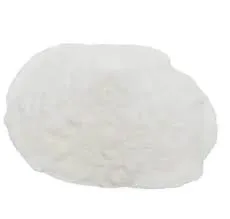
Dec . 04, 2024 23:25 Back to list
grades of hpmc
Understanding Grades of HPMC A Comprehensive Overview
Hydroxypropyl Methylcellulose (HPMC) is a cellulose derivative that has become increasingly popular in various industrial applications, especially in pharmaceuticals, food, and cosmetics. The versatility of HPMC largely stems from its different grades, which are determined by factors such as viscosity, degree of substitution, and solubility properties. This article delves into the significance of HPMC grades, their manufacturing processes, and their applications across various sectors.
What is HPMC?
HPMC is a synthetic polymer derived from cellulose, which is a natural polysaccharide found in the cell walls of plants. Through chemical modification, cellulose is transformed into HPMC, allowing it to possess unique properties such as water solubility and film-forming capabilities. These characteristics make HPMC a valuable ingredient in a wide array of products, from binders and thickeners to controlled-release drug formulations.
The Importance of HPMC Grades
The classification of HPMC into different grades is based on its viscosity and application suitability. Generally, HPMC can be categorized into low, medium, and high viscosity grades. Each grade serves a specific purpose, and the choice of grade depends on the desired characteristics in the final product.
1. Low Viscosity HPMC This grade is characterized by a lower molecular weight, which results in lower viscosity solutions. It is often used in applications that require easy handling and fast dissolution, such as in instant food products and certain pharmaceutical preparations.
2. Medium Viscosity HPMC This is a versatile grade that falls between low and high viscosity. It is used in various applications, including as a thickening agent in paints and as a binder in tablet formulations. The medium viscosity allows for a balanced performance, making it suitable for a wide range of formulations.
3. High Viscosity HPMC With its higher molecular weight, this grade is ideal for applications that require thickening and stabilization. It is commonly found in cosmetic formulations, where its film-forming properties improve the texture and stability of products like lotions and creams.
grades of hpmc

Manufacturing Process of HPMC
The production of HPMC involves several key steps cellulose extraction, etherification, and drying.
1. Cellulose Extraction The process begins with the extraction of cellulose from wood pulp or cotton linters. The purity of cellulose is crucial, as impurities can affect the quality of the final product.
2. Etherification The extracted cellulose is then subjected to etherification, where it is reacted with propylene oxide and methyl chloride to introduce hydroxypropyl and methyl groups. This chemical modification enhances the solubility and functional properties of cellulose.
3. Drying and Milling After etherification, the product is dried and milled into a fine powder, which can be further classified into different grades based on viscosity through testing.
Applications of HPMC
The diverse properties of HPMC allow for its utilization across various fields. In the pharmaceutical industry, it serves as a binder in tablet formulations, an emulsifier, and a thickening agent in topical preparations. In the food industry, HPMC is used as a fat replacer, stabilizer, and texturizing agent in products like sauces and dressings. In construction, it acts as a water-retaining agent in mortars and plasters.
Conclusion
In summary, the grades of HPMC play a crucial role in determining the suitability of this versatile polymer for various applications. Understanding the differences among low, medium, and high viscosity grades enables manufacturers to select the correct type of HPMC for their specific needs. As demand continues to grow across sectors, the significance of HPMC and its differing grades will only increase, making it an essential component in numerous formulations. The ongoing research and development in this field promise to unlock new potentials for HPMC, further broadening its horizon in multiple industries.
-
Versatile Hpmc Uses in Different Industries
NewsJun.19,2025
-
Redispersible Powder's Role in Enhancing Durability of Construction Products
NewsJun.19,2025
-
Hydroxyethyl Cellulose Applications Driving Green Industrial Processes
NewsJun.19,2025
-
Exploring Different Redispersible Polymer Powder
NewsJun.19,2025
-
Choosing the Right Mortar Bonding Agent
NewsJun.19,2025
-
Applications and Significance of China Hpmc in Modern Industries
NewsJun.19,2025







